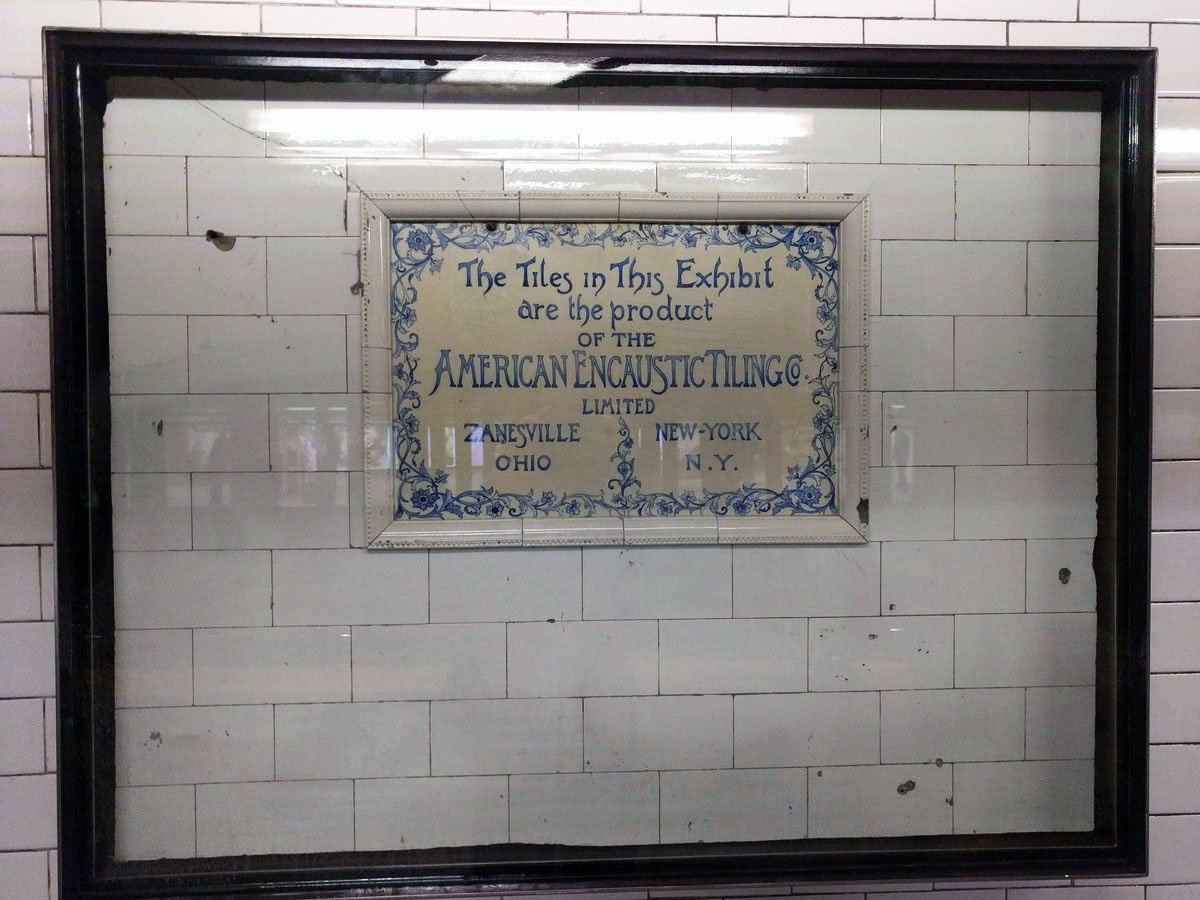Subway Tile
From Platform to Backsplash
Over the past decade or so, subway tile has seen a major resurgence in popularity in people’s kitchens and bathrooms. But where did this 3 by 6 -inch white tile come from? Popular legend says that it was invented for the first New York City subway stations. However, that is more lore than fact. Subway tile is actually a type of tilework known as sanitary tile that was popular from approximately 1900 to 1930. Sanitary tile is the product of the 20th century rise in industrialization and newfound emphasis on hygiene and public sanitation.
Restored 1910 platform wall at Times Square Station, 42nd Street Shuttle, showing an early use of sanitary tile in the New York subway system.
In the early 19th century, tiles were handmade in a process utilizing wet clay. They were expensive, usually imported from Europe, and were primarily used for decoration in the homes of the wealthy. The development of the dust-pressed manufacturing process and growth of the tile industry in the United States dramatically reduced production times and cost. While handmade tiles could be produced at the rate of one to two hundred per day, dust-pressed tiles could be output in the thousands, partly because tiles made from wet clay must be thoroughly dried before firing in a kiln, while the dust-pressed process utilizes a dry clay mixture that can be fired immediately without substantial warpage and shrinkage.
19th Century advancements in manufacturing technology brought increasing numbers of people to cities to work in factories. As urban populations grew, so too did their sanitation problems. Diseases like cholera, smallpox, and typhus plagued city dwellers. New theories about germs and the origins of disease sparked a revolution in household hygiene and city sanitation. In 1849, New York City began construction of its first modern sewer system. The state legislature passed a law requiring large cities to provide public bathing facilities 1895. With the Tenement Act of 1901, flush toilets became required in new apartments.
Capitalizing on the new craze for cleanliness, an art tile manufacturer, the American Encaustic Tiling Company (AET Co.), began to market a new “sanitary” tile with advertisements suggesting uses in hospitals, kitchens, public baths, and bathrooms. This tile stripped away artistic embossed textures and decorative glazes to provide a perfectly flat face and “sanitary” gloss white or ivory glaze that would be impervious against germs and easy to clean. What’s more, they offered a wide range of radiused trim shapes to eliminate 90-degree corners that could trap dirt and allow for continuous tile coverage of any surface. Furthermore, the edges of each tile were made perfectly square, allowing narrow, often “pencil line” thickness, grout joints that were less susceptible to soiling.
Sanitary tile was available in a wide range of radiused trim shapes, eliminating hard-to-clean corners and allowing for complete coverage of surfaces. (Associated Tile Manufacturers, 1921)
When work began on New York’s first subway in 1900, the features of AET Co’s sanitary tile made it a seemingly perfect choice to line the stations’ platforms. The gloss white glaze also offered a way to brighten up the dimly lit stations. But it was not meant to be. Designers instead opted for tiles made of opaque white glass, restored examples of which can be seen at today’s Bleecker Street and 145th Street stations (two of JBC’s many subway station projects), and other tile finishes. Fortunately for AET Co, glass had a short run on station walls and, by 1902, plans for new stations included AETCo’s 3 x 6 -inch format, presumably to compliment the proportions of the brick wainscot used at the bottom of walls. Not long after, subways in London and Paris followed suit with their own versions of this iconic tile. Sanitary tiles quickly became associated with subway walls and the name, “subway tile” caught on.
In 1901, AET Co installed this mockup of their 3 x 6 sanitary tile at 59th Street-Columbus Circle Station hoping to win the contract to tile New York City’s subway walls. While they did not win the battle, they certainly won the war. Today, their tile is the prototype for subway tile.





